|
|
|
|
|
Intel Core I7: Nehalem Arrives |
|
Join the community - in the OCAU Forums!
|
Test Hardware, System Settings
TEST HARDWARE, SYSTEM SETTINGS
Intel has released its own motherboard, the DX58SO, for the X58 chipset. It comes with an 8-layer PCB and solid state capacitors.

The 6-phase PWM control chip ADP4000 supports VRD11.1 norms. W also spotted a PA 2080 PULSE power inductor.
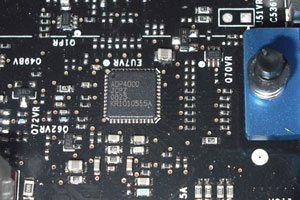 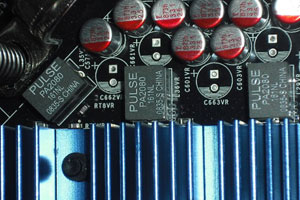
Intel is pointing out that the memory slots and the IOH chip have been moved as close as possible to the processor socket. This reduces signal rerouting and interference.
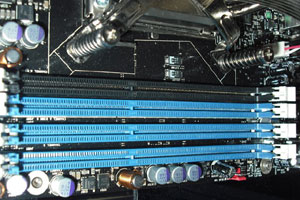 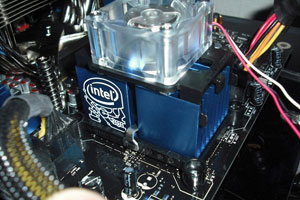
The DX58SO comes with all the features expected form a modern mainboard, namely 2 PCI-E X16 2.0 graphics slots, 7.1-channel DOLBY surround sound, e-SATA interface, RAID 0,1,5,0 +1, IEEE 1394, and LAN.
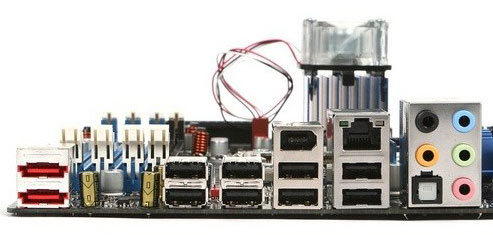
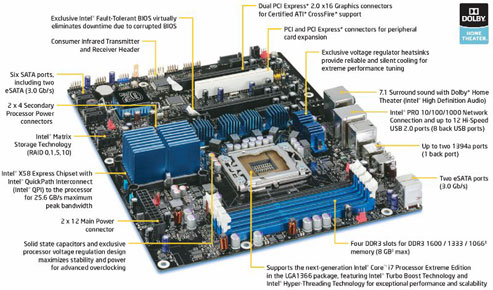
The BIOS is “overclocking friendly” with a plethora of functions to adjust processor and memory performance. We will go into more details about this in the section “Overclocking the Core i7”. The DX58SO lacks though the advanced cooling for chipset and mosfets of high-end mainboard from manufacturers like Asus and Gigabyte. IOH and mosfets are only covered by rather unsophisticated aluminum heatsinks. The IOH though is additionally cooled by a high-speed 40mm fan. The DX58SO was running 100% stable and reliable through all tests. We did not experience any issue with this board. The Core i7 965 and 920 processor samples overclocked well with DX58SO. We can therefore recommend the DX58SO as a solid and relatively cheap mainboard for running Core i7.
The Core i7 processor has three independent memory channels. On the DX58SO motherboard these are indicated by three blue memory sockets. For best performance each of these blue sockets should be populated with memory which is matched by manufacturer, size, speed, and type. A forth memory connector is included, indicated by the black socket, to increase over-all system memory capacity. Higher total memory capacity can have a positive benefit in a very hard drive intensive application, but will increase memory latency. The DX58SO manual is stating the following warning in regard of the memory voltage: “Important note: The processor is limited to memory that does not exceed 1.6 volts. Running memory at voltages higher than this can potentially cause damage to the processor.“ Other chipset X58 based motherboards come with the same warning. The problem with this is that most of the current high performance DDR3 modules require much more than 1.6 volt to run at frequencies above 1333 MHz. So far it is unclear to which extend such modules can be used with X58 motherboards. It is also unclear after what time of usage more than 1.6 volt would actually damage the processor. Naturally Intel as manufacturer is trying to avoid any risk, and is therefore strictly recommending staying within the JEDEC voltage specification for DDR3. For sure, applying more than 1.6 volt for a short time will not do any immediate damage. The impact of long-term usage has to be seen. In regard of this issue, many memory manufacturers have announced 3-channel DDR3 kits that run at below 1.6 volt. The Qimoda DDR3 modules we were using are specified to run at 1.50 volt at 1066 MHz with timings of 7-7-7-21. We found them to be stable at 1066 MHz with timings of 6-6-6-16. The DX58SO is supporting DDR3 800/1066/1333/1600. In order to run the Qimoda DDR3 modules at 1333 MHz - without increasing the voltage above 1.6 volt - timings had to be loosened to 11-11-11-28. Our tests revealed that a frequency of 1066 MHz at 6-6-6 resulted in slightly better bandwidth than 1333 MHz at 11-11-11. We therefore ran all tests at 1066 MHz and 6-6-6-16.
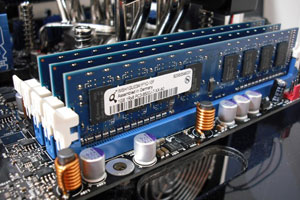 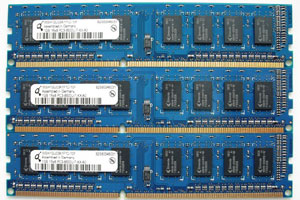
We are comparing in this test the Core i7 920 and Core i7 965 with a previous generation Penryn based QX9770. The QX9770 was until now Intel’s s flagship desktop processor. It runs at 3200 MHz. This is the same frequency as the Core i7 965 is running. Our test platform was the Intel DX58SO mainboard with an nVidia GTX280 graphic card. Intel provided one additional high-light for this review: An 80 GB solid state disk (SSD).
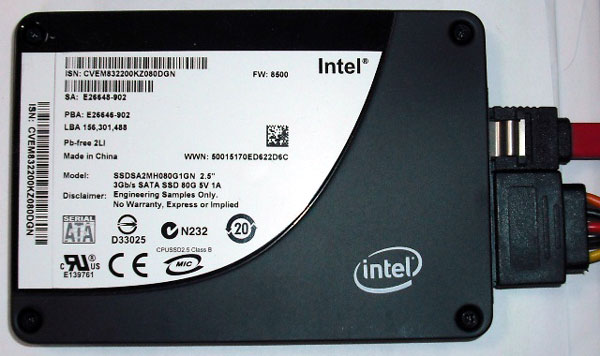
There is good reason that Intel is promoting this SSD, because it’s an Intel product. As a producer of flash memory Intel is apparently intending to open a new source of business with SSD. The 80GB SSD was blazingly fast, and deserves a review in its own right.
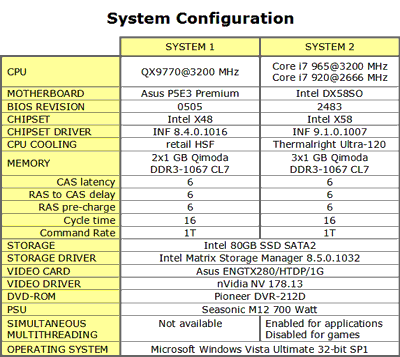
|
|
Advertisement:
All original content copyright James Rolfe.
All rights reserved. No reproduction allowed without written permission.
Interested in advertising on OCAU? Contact us for info.
|

|


